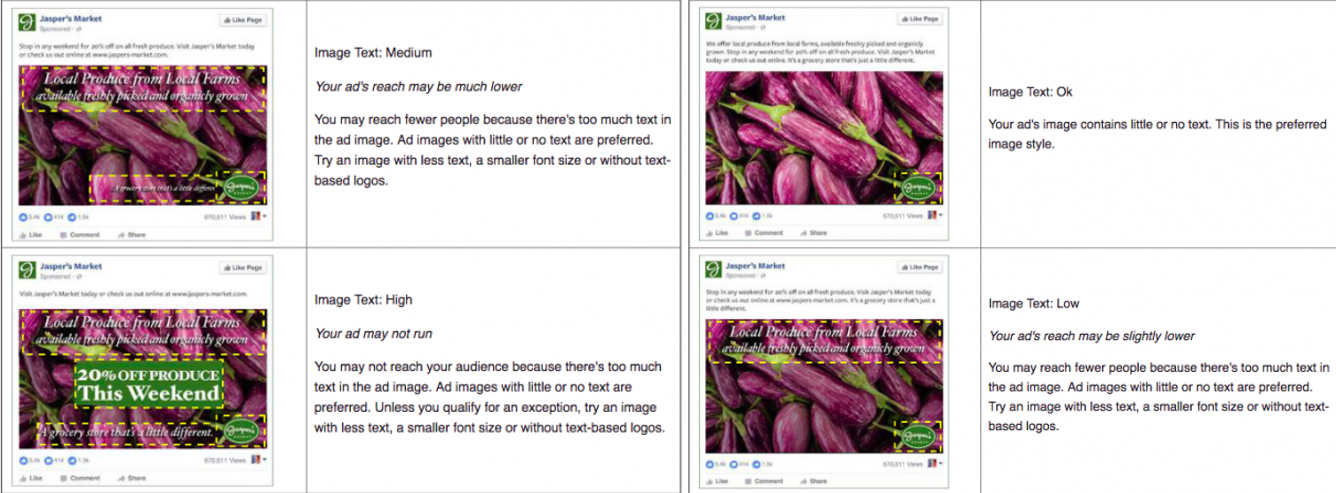Michael Calia - 08/21/2020
Improving social media engagement allows businesses to generate more reach and notice a greater ROI on their social media marketing strategy. Because there is no one-size-fits-all strategy, here are six tips that businesses can utilize to maximize engagement on their social media content.
One of the key benefits of social media to businesses is the ability to interact with customers. Through your brand’s pages, you can increase awareness about your company and its services/products, create conversations, and drive traffic to your website. The key to achieving these goals through social media is spurring engagement. Businesses that focus on building their social media engagement can benefit from stronger reach and experience a greater ROI on their social media marketing strategy.
What is Engagement and Why Is It Important?
 Social media engagement comprises any sort of interaction a user has with content posted on a page. This includes social actions, such as likes, comments and shares, as well as clicks on a user’s profile, clicks on hashtags, expanding an image, playing a video and more. From an analytical standpoint, the amount of engagement can tell you how your content is resonating with your followers. The more enticing or relevant the content is to your audience, the more they will interact with it. It can also help you better determine which types of imagery or post copy are more effective, so you can improve future posts. The long-term goal is increased brand awareness and recognition, which is vital to businesses facing growing competition.
Social media engagement comprises any sort of interaction a user has with content posted on a page. This includes social actions, such as likes, comments and shares, as well as clicks on a user’s profile, clicks on hashtags, expanding an image, playing a video and more. From an analytical standpoint, the amount of engagement can tell you how your content is resonating with your followers. The more enticing or relevant the content is to your audience, the more they will interact with it. It can also help you better determine which types of imagery or post copy are more effective, so you can improve future posts. The long-term goal is increased brand awareness and recognition, which is vital to businesses facing growing competition.
Maximizing engagement needs to be a key component of your social media strategy because it determines how many people see your content. Facebook, Twitter, Instagram and LinkedIn prioritize posts that have more signs of interaction when selecting what content appears on a user’s newsfeed. Just because someone follows your pages does not mean they’re guaranteed to see your posts every time they check their feeds. But if your posts receive lots of engagement, it’s more likely that social media platforms will prioritize your content in people’s feeds. Basically, more engagement = more eyeballs. In addition, stronger engagement means your page’s posts will be easier to find using explore features, resulting in more reach. In short, having people like, click and comment on your posts will then lead to sustained interaction, resulting in even more engagement.
But optimizing such an important metric in your social media marketing strategy isn’t so simple. While there’s no cookie-cutter way to boost interactions on your posts, here are six tips to help you craft better social media content that will generate more engagement.
1. Know Your Audience
First things first—you need to understand not only who is currently reading your content, but who you want to be reading it. This should dictate the language used and the overall tone of your social media presence. Knowing your target audience should include identifying their wants and needs, as well as what typically attracts them to your company. For example, if your business sells organic food products that people value because of health benefits, let your social media pages become vital resources for nutritional facts and tips for maintaining a healthy lifestyle. If your target audience is also eco-conscious, share resources that demonstrate your brand’s commitment to sustainability while offering useful ways for consumers to reduce the negative impact they have on the planet. Identifying your company’s role in satisfying customer wants and needs helps you cater your social content to be more enticing or relevant to them.
2. Utilize Quality Imagery
Text-only posts just aren’t going to cut it these days for most businesses. Think about someone scrolling through his or her feed, passing post after post after post. With the content piling up, you’ll need to make sure yours stands out to avoid being forgotten about or just completely ignored. The best way to do this is with captivating images that help grab your followers’ attention and properly convey the correct message. Like every other aspect of your social media strategy, it’s important to stay on brand when using images. Make sure the imagery you develop aligns with what the post is conveying. Try to be consistent with the style of imagery to make the content more recognizable. When possible, utilize branded imagery so the information is immediately associated with your business, increasing the likelihood that followers not only retain the information, but are quick to connect it with your brand’s products or services.
When choosing or creating images, it’s important to make sure they appear in posts as intended. Each platform has its own ideal image sizes. Adhering to these dimensions means your graphics won’t get cropped. Cutting off pieces of images can change how they’re viewed entirely, so make sure everything is properly sized before posting.
Text-heavy images should also be avoided if possible, as they don’t tend to perform well on social media. If you plan on sponsoring posts, Facebook and Instagram have rules advising against images containing more than 20% text, as ads containing these images may not even run. Keep this in mind and put as little text as possible on images made for social media.
3. Let Your Objective Guide Your Call to Action
When possible, your posts should have a clear call to action (CTA). Before crafting a post, consider what specific action you would like your audience to take with it. Oftentimes, you’ll try to direct people to specific landing page or website, whether it be to read an article or sign up for a webinar. When this is the case, your post copy should clearly direct people to do so. But telling your audience to click a link isn’t good enough. Start your post copy with an important stat or fact to grab your followers’ attention, and then encourage them to click through to learn the full story, properly demonstrating what knowledge they will gain from doing so. Other posts may seek to drive user comments to create a conversation. If this is the case, write it out in the copy. If you want to create a conversation, you’ll have to let everyone know that their thoughts are welcome on the page. Naturally, you’ll also want to closely monitor the comments when doing this, as nothing can spoil a conversation quite like offensive language or spam. Sometimes people will just need a bit of direction to take the action you’d like them to, so ensure that your posts make this clear and simple for them.
4. Use Hashtags Effectively
The main goal of hashtags is to allow social media users to find similar posts about a given topic. When used properly, they can cause more people to view your posts, thus increasing the amount of impressions your content gets. Because these users would also find your content relevant to their interests, they’d be more likely to interact with your posts. In fact, hashtag use is proven to cause increased engagement on Instagram.
Conduct thorough research to identify the best hashtags to use, as they will put your posts in front of the best possible social media users. Ideally, you’d want to find hashtags that are commonly used in conversations that are relevant to the products or services your business provides. However, if the hashtags are too widely used, there’s a chance that there are other posts using them that don’t exactly line up with your goals. Because of this, it’s often best to pair commonly used hashtags with niche ones that relate to a more precisely specified audience. It’s also wise to keep an eye on trending hashtags. If any relate to your business, joining the conversation will help you capitalize on a growing discussion, getting your content more views and interactions. However, using too many hashtags with your post can make it seem like spam, which would achieve the opposite effect. Don’t just go cramming each post with as many hashtags as you can. Quality usually outweighs quantity in this case.
Social media users often participate in random holidays or observances. These hashtags are typically among the top trending topics, so it’s easy to understand why some brands would also want to take part. However, you should only do so if you can directly tie the holiday to what your brand is all about. For example, a company that sells high-end athletic apparel probably shouldn’t be posting about #NationalBurritoDay. Doing so can seem cheesy and damage your brand’s reputation, especially if people are turned off enough by the post to unfollow your page.
5. Make Use of Behind-The-Scenes Content
Social media gives brands an easy way to boost transparency and show a more personal side, which can attract more customers. In fact, research suggests that a vast majority of consumers would be more loyal to brands that demonstrate transparency in their marketing strategies. Give followers a glimpse of what it’s like for the people that make your business possible. Do this by celebrating achievements, publishing appreciation posts for your employees, or sharing news about your company history. When done right, this can create a greater connection with your followers and customers, bolstering their trust to turn them into brand advocates. In the light of how the COVID-19 pandemic has altered the way we do business, new data suggests that trust, reputation and conversation are becoming almost as important as price and convenience. Knowing this, brands should look to build this trust by showcasing a happy and healthy working environment via behind-the-scenes social media content.
6. Conduct Regular Analysis
In a past blog, we discussed the importance of setting objectives with social media marketing. Part of achieving these objectives involves actively monitoring your progress to determine the best ways to adjust your strategy. Like I mentioned before, there’s no one-size-fits all strategy when it comes to maximizing engagement on social media. The best way to sharpen your approach is to frequently analyze what posts and types of content perform best. Keep track of the categories of top-performing posts, and maintain a steady frequency of those in your schedule. Identify which hashtags lead to the most impressions and engagements to determine which should take priority over others. When posting the same piece of content multiple times, consider adjusting the copy and imagery each time you post it. This will help you determine the tone and language that resonates best with your audience. Take the same approach when writing out CTAs to gain a better understanding of which word choices work best, as well. While a growing audience will lead to changes in preferences, current events could also cause people to value different aspects of a brand. Taking an adaptive approach to creating and scheduling posts helps you stay on top of these changes, preventing your content from getting stale.
Timing is an often-overlooked factor when posting to various pages. Many social media monitoring platforms will automatically identify the optimal times for posting based on when your pages’ followers are most active. When this is not available, this process will involve manual testing to determine the best times. To narrow down ideal posting times, consider scheduling posts at different hours throughout the day, and then compare how post performance differed at these times. While the content itself may often dictate when to post certain items, try to stay within the golden timeframe as much as possible to maximize interactions.
As vital an asset that social media can be for expanding a business, it can be wasted if not utilized correctly. Perfecting your social media marketing strategy can take time, but it’s crucial to stay on top of it to keep followers interested, thus maintaining a steady flow of interaction to your content. With increased positive engagements comes a positive brand image, further bolstering customer loyalty. Head to our website to learn more about how 3E PR can assist in building the ideal social media presence for your brand.


